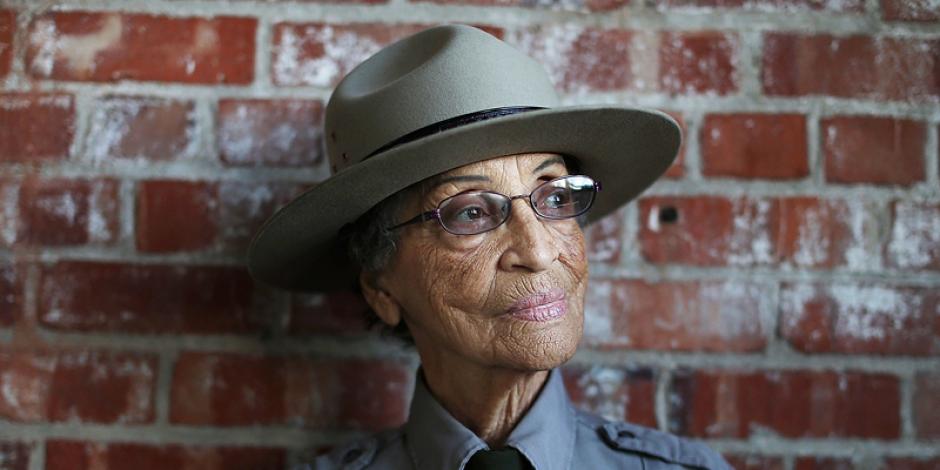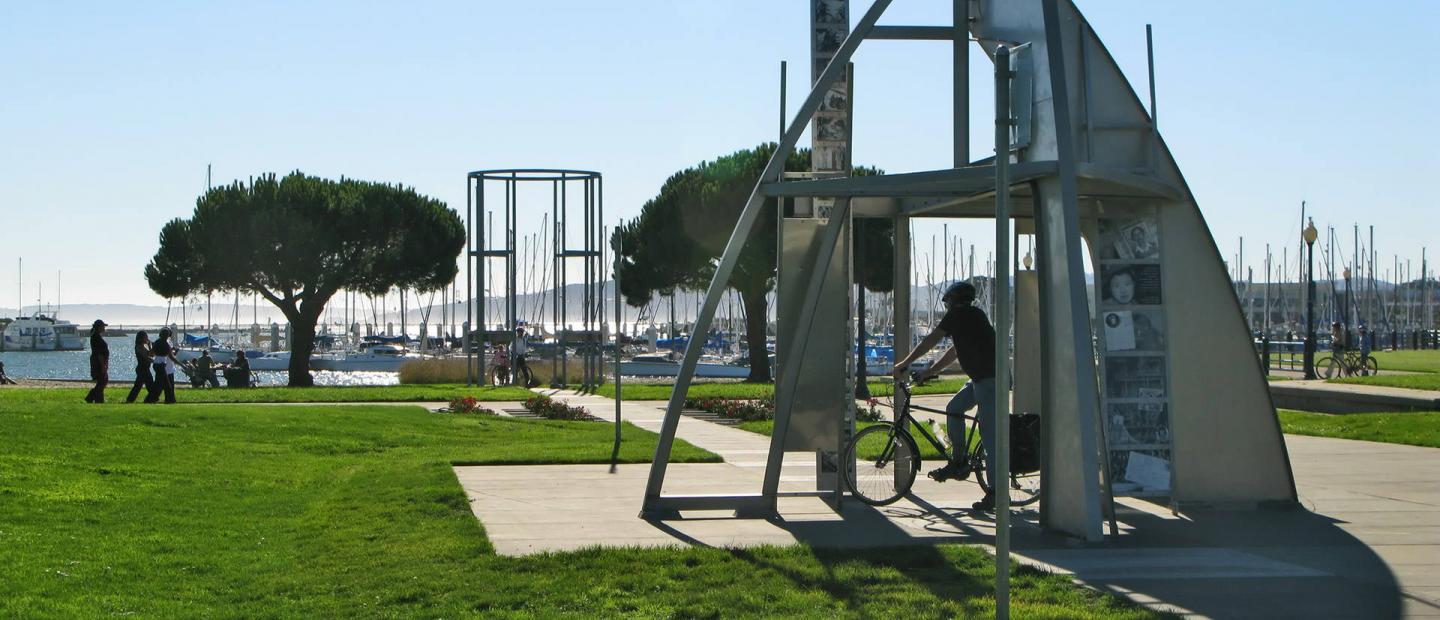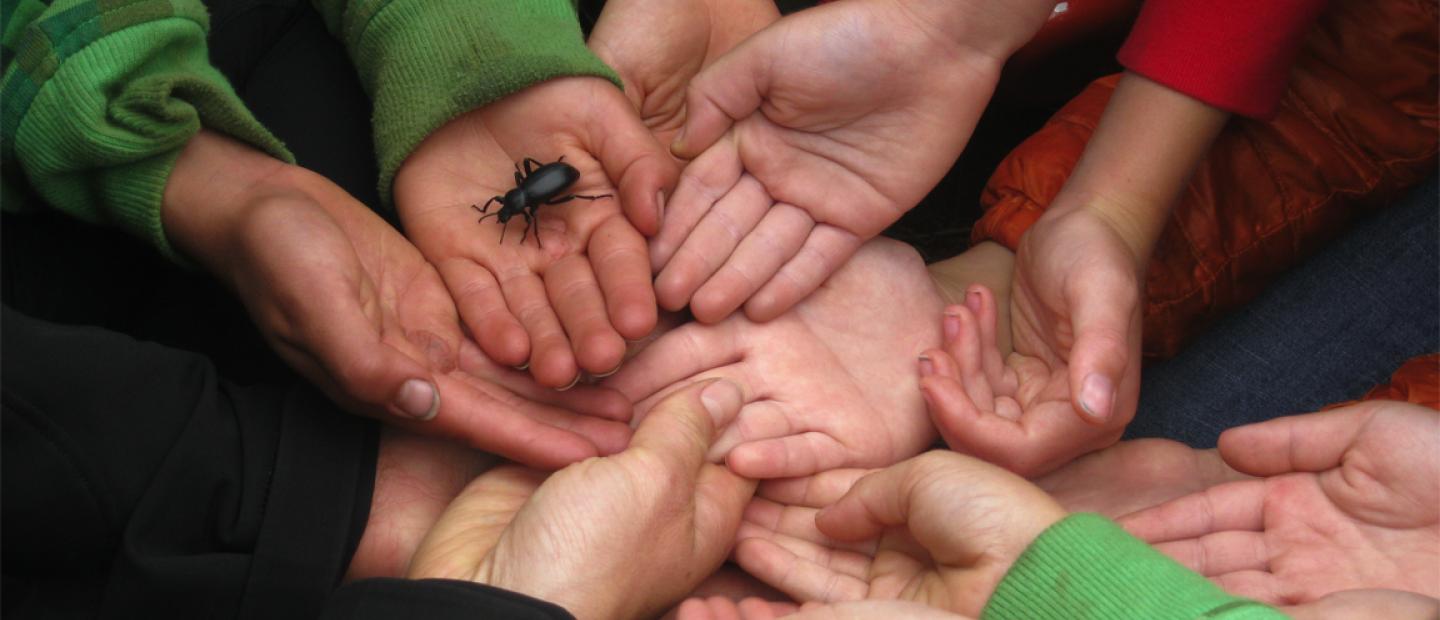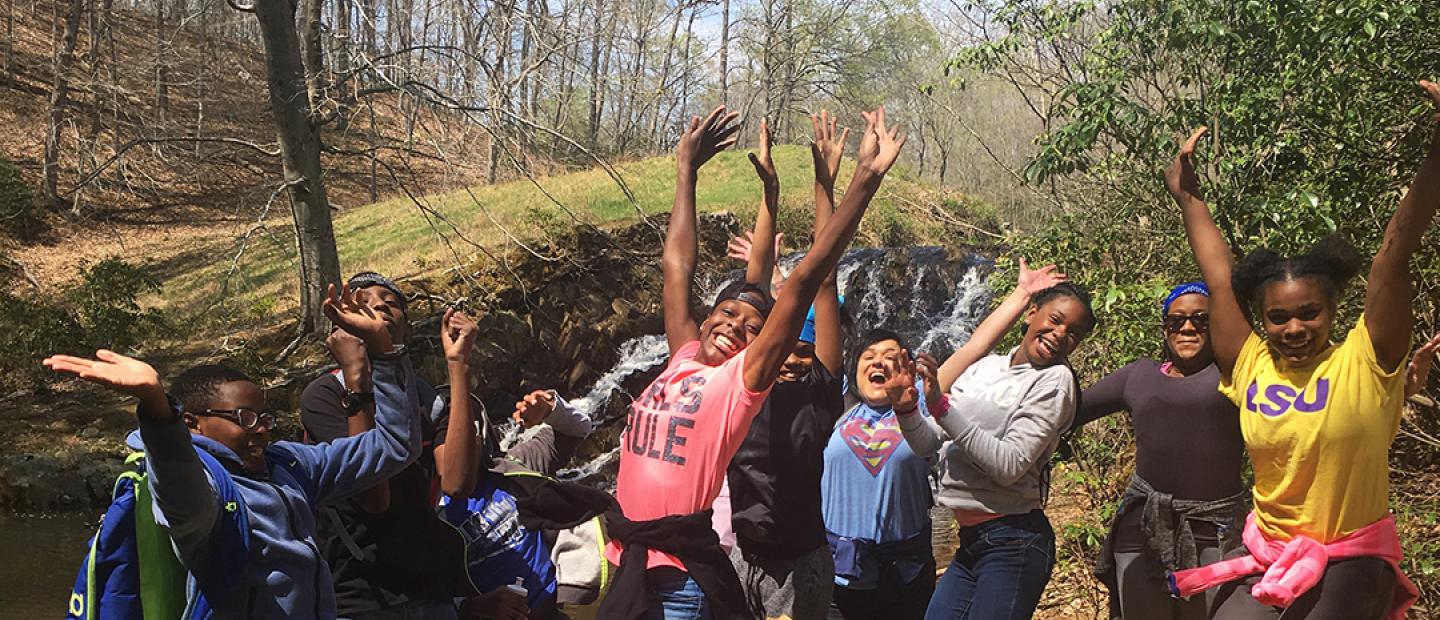The Notorious Betty Reid Soskin

The presence of 95-year-old National Park Service Ranger Betty Reid Soskin at the 2017 NatureBridge Gala was a poignant reminder of all the work that needs to be done to improve our flawed social system as we shape the environmental stewards of tomorrow.
"I'm known on the streets as the Notorious B.R.S." #
Those were the first words that came out of the mouth of 95-year-old National Park Service Ranger Betty Reid Soskin as she took the stage as the keynote speaker for the 2017 NatureBridge Gala. When I first heard that Betty would be the Gala’s keynote speaker, I could hardly contain my excitement.
As an advocate for gender equality, I was excited to hear from someone whose involvement in social activism dates back to World War II. Betty Reid Soskin was an original Rosie the Riveter, sleeves rolled up and ready to fill the gaps that were left in the industrial labor force when men were drafted for war. Betty faced added obstacles as she fought for her place as a Black member of the female labor force when she worked as a file clerk for a segregated boilermaker union in Richmond, California during the war. Although the Rosie the Riveter movement encouraged women to rise up for their country, women of color faced racial discrimination among their white female counterparts during World War II.
In the late 1990s when steps were being taken to establish a national historic park that recognized women’s role on the Homefront of World War II, Betty stepped in to ensure that the story of Black women’s experiences in the war effort were represented accurately. In 2000, the Rosie the Riveter/World War II Home Front National Historic Park was established to provide a place where future generations could remember the contributions that all women made to the war effort in its true light.

As she did with her efforts to speak the truth on the ‘Rosie the Riveter’ movement in the 90s, Betty swiftly cut through the delicate veil of silence surrounding our country’s current racial issues minutes into her speech at the Gala.
Betty grew up in the presence of her great-grandmother, a woman who was born into slavery. She was 27 years old when her great-grandmother died. Betty lived and breathed in the presence of a woman who was subjected to the traditional form of American slavery that we only read about in textbooks.
“In order to own that history, own it, we must process it, because I don’t think that we have ever processed the Civil War. We must own it in order to begin to forgive ourselves so that we may move together into a more compassionate future.”Betty Reid Soskin in her keynote address
There is a discomfort associated with discussing racism and discrimination. Yet as Betty says, if we don’t talk about it, really talk about it, how can we move forward? Betty’s words made me and all 300 NatureBridge Gala guests realize this as we sat in silence, absorbing every single word that left her lips.
In the environmental sector, it is quite glaring how much progress we have to make in this regard.

According to a report published by Green 2.0, people of color only make up an average of 15.4 percent of the workforce in environmental organizations in the U.S.
How can we build a more sustainable world for future generations if we keep a narrowed focus on environmentalism and do not take into account the racial equality aspect of a truly sustainable society?
It is estimated that by 2055, the U.S. will not have a single racial or ethnic majority according to the Pew Research Center. As our country makes this demographic transition, we must ensure that environmental organizations reflect that shift in our workforce. The basis of NatureBridge programs is to shape the next generation of environmental stewards, but without diverse staff members, we risk missing a large portion of our future leaders who may need an educator of their own racial background in order to feel empowered to succeed. In fact, a study made by the IZA Institute of Labor Economics concluded that having just one Black teacher in third, fourth or fifth grade reduced low-income Black boys' probability of dropping out of high school by 39 percent.
To combat this issue, NatureBridge created the Educator Development Program (EDP), which aims to increase the representation of those who have had historical and systemic barriers to the field of outdoor education and environmentalism. EDP recruits and trains education staff from racial and ethnic minority groups, urban youth, low-income communities, immigrant communities, LGBTQ communities, and other underrepresented groups who can connect with our students based on shared experiences as members of the same marginalized communities. NatureBridge also partners with the Outdoor Education Institute to train NatureBridge staff with an outdoor professional and workforce development program that equips participants to be culturally relevant outdoor leaders.
Across the U.S., countless more environmental organizations have begun to take steps toward closing this diversity gap. Yet many programs continue to struggle to break what has been coined as the "green ceiling." It’s an obstacle that stems from an institutional exclusion of opportunities available to non-whites and an unconscious bias from the predominantly white environmental sector. Despite the pitfalls of the environmental movement, programs like those that NatureBridge offers have created a means for our youth to connect to our natural world in a meaningful way.
“We have created this incredible system of national parks where it’s possible for these children, who are served by NatureBridge, to revisit almost any era in our history,” Betty said as she wrapped up her speech.
“And that’s the legacy that the National Park Service and NatureBridge promises to our young people.” #

Now, it’s up to us, as members of the environmental education sector, to ensure that this legacy continues to inspire young environmental champions from all backgrounds and ethnicities in the most inclusive way possible. Betty’s presence at the NatureBridge Gala was a poignant reminder of all the work that needs to be done to improve our flawed social system as we shape the environmental stewards of tomorrow. She is an amazing example of a park ranger who has dedicated almost a decade of her life to preserving America’s parks.
But moreover, she is a symbol of how the collaboration and empowerment of people from all racial backgrounds for one cause can not only be powerful, but unstoppable.

